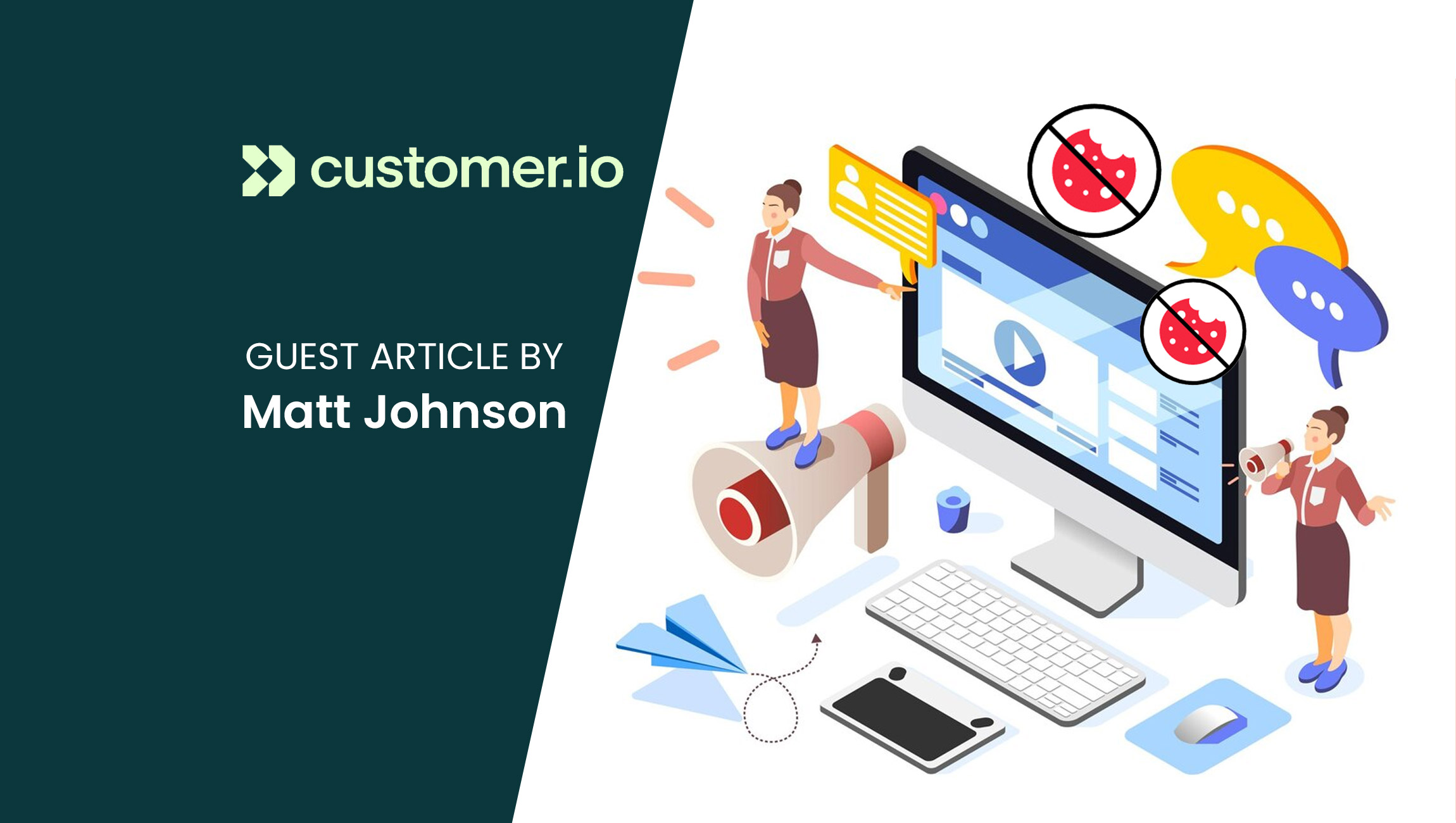Growing concerns for digital privacy are leading to the depreciation of third-party cookies, a vital tool for many marketers. Within the year, cookies will be banned or phased out from major browsers such as Chrome, Safari, and Firefox. But these aren’t the only things changing – other privacy regulations are also expanding, such as more extensive ad blocking and device ID prevention. These changes are good in many ways, especially for privacy-concerned consumers! However, many marketers who have traditionally used third-party cookies as their advertising strategy’s foundation might feel a little uneasy.
Marketers face a growing challenge as cookies crumble: How can they respect customers’ privacy while providing a personalized experience, reach new audiences, and still produce results?
Expanding beyond cookies with first-party data
Marketers must shift their focus from using third-party to first-party data. First-party data is information collected directly from your audience through your own channels. Consumers consent to the collection and usage of this data, unlike third-party data, which is gathered by a separate entity without a direct relationship to the audience.
First-party data allows marketers to understand their customers better and provide a more accurate and ethical representation of their interests and preferences than third-party information. With this insight, marketers can create personalized campaigns targeting specific audience segments based on past interactions, preferences, and predicted behavior. This improves the effectiveness of marketing efforts and builds trust with customers who appreciate a more tailored experience.
However, leveraging first-party data correctly necessitates the exploration of new strategies. We’ll delve into three specific use cases to enhance your advertising without cookies: precision, contextual, and dynamic creative targeting.
And remember: It all starts with first-party data. If you know who your customers are, understand their interests, and respect their privacy, you can still advertise effectively without third-party cookies.
Precision Ad Targeting
As the name implies, precision ad targeting relies on precision.
Your consented first-party data establishes an identifier (typically email) and pairs that with interests and behavior to create segments of known customers. You can then send those segments to ad networks for direct activation where matching identifiers are available, and you can leverage those same segments to seed your preferred ad networks’ look-alike models.
Benefits of precision targeting:
- It helps you be where your customers are because you target known identities, not probable matches.
- It enables you to create highly tailored campaigns that are more likely to reach the intended audience.
- It helps track customer behavior, enabling a strategic increase in targeting frequency.
- It allows you to save money by focusing on potential customers interested in your product or service.
- It empowers you to maintain relevance with your ideal audience in a non-intrusive way.
Precision targeting is unique because it enables your ads to be precisely where your customers are. With user consent and provided information, you can follow their movements, track their purchase history, and monitor items they have shown interest in. This data enables you to strategically increase your targeting frequency. As a result, when customers are ready to buy, your product or service is the first thing that comes to mind.
What does this look like in action? Assume you are an e-commerce company selling women’s athletic clothing. If a visitor adds a specific pair of leggings to their basket but doesn’t check out, you could display an ad the next day showcasing the item they left behind. This personalized ad, linked to a previous interaction, is much more likely to convert than a generalized “workout gear” ad without personalization.
Marketing Technology News: MarTech Interview with Shirli Zelcer, Chief Data & Technology Officer @ Merkle (a dentsu company)
For precision targeting, you need good data
However, the success of your campaign heavily relies on accurate data to effectively reach your target audience. Therefore, it’s critical to properly segment your audience, regularly test your ideas, and make necessary adjustments.
Contextual targeting
While precision targeting is our top recommendation, contextual targeting can also be very effective. Contextual targeting still relies on first-party data, particularly customer preferences, and interests, but it activates differently. Advertisers can leverage first-party data to target based on keywords and content, buy inventory via an ad network, or work directly with publishers that align with their customer segments. (The same principles can be applied to search engine marketing, but that’s often considered a separate advertising strategy.)
Best practices for creating a contextual ad campaign:
- Choose the right keywords and topics
- Identify the right platforms
- Test ads thoroughly
Your success with contextual advertising depends on understanding the topics and keywords that resonate with your ideal customers. Thus, identifying the right keywords and topics is crucial before launching your campaign. Analyze your first-party data thoroughly to ensure you’ve identified the topics your customers care about. Carefully select the right platforms to display your ads, as each ad network and publisher offers different relevant inventories. Review the options to ensure they align with your campaign goals and target audience. If you follow these suggestions, you should be in a good place.
What would this look like in practice? Suppose you sell fitness trackers. You might place your product ads on a website selling protein powders.
Dynamic creative optimization (DCO)
Another strategy to consider is dynamic creative optimization. Traditionally, DCO has used third-party cookies, but first-party data is a more-than-suitable replacement.
A hybrid of precision and contextual targeting, DCO leverages precision segments (hello, identities, and interests!) and contextual placements (hello, keywords, and content!) to deliver relevant real-time ads designed for your audiences. This form of advertising moves in sync with your audience, as marketers can customize parts of the ad, such as images, headlines, and CTAs, and build the ad based on past data.
This tactic is particularly effective for retargeting campaigns, time-sensitive offers, and location-specific offers intended to draw users into a physical store. SaaS and subscription-based companies can also benefit from DCO, especially when customers are encouraged to sign up for a free trial.
For example, suppose you operate a short-term rental booking site similar to Airbnb and want to retarget customers who haven’t booked a stay for some time. By using historical data on the customers (i.e., where and when they last booked) and their recent property search views, you can send them ads with relevant content personalized to their preferences, including specialized images, CTAs, and special discounts only for them, thereby encouraging a conversion.
Pro Tip: Leverage a customer data platform (CDP)
Without precise and well-collected data, your advertising efforts might not be effective – no matter which advertising strategy you use! That’s why utilizing a Customer Data Platform (CDP) alongside your advertising and marketing initiatives is best practice.
At their most fundamental, CDPs unify customer data and make it available to the teams that need it. Specific to advertising, a CDP is used to gather customer data from disparate sources into comprehensive customer profiles, build segments informed by insights from the profiles, deliver those segments to ad networks and publishers for activation, and then aggregate advertising engagement data to keep the segments relevant. Bonus points if your CDP can do this in real-time.
With a CDP, targeting customers across multiple channels becomes much easier, enabling precise audience modeling, segment building, and ad enrichment.
Marketing Technology News: Creativity is at a Crossroads and in the Crosshairs
Say hello to building better relationships
While the era of cookies is drawing to a close, the future of marketing is far from unstable. By carefully adapting your marketing strategies, you can establish more profound and meaningful connections with your customers. Making a strategic investment in your first-party data will help you navigate this transition smoothly and also aid in protecting your customers’ privacy.
Also Catch: Episode 200 Of The SalesStar Podcast: B2B buying and selling habits with Raul Murguia, Sr Dir of Integrated Marketing for LinkedIn Sales Solutions











